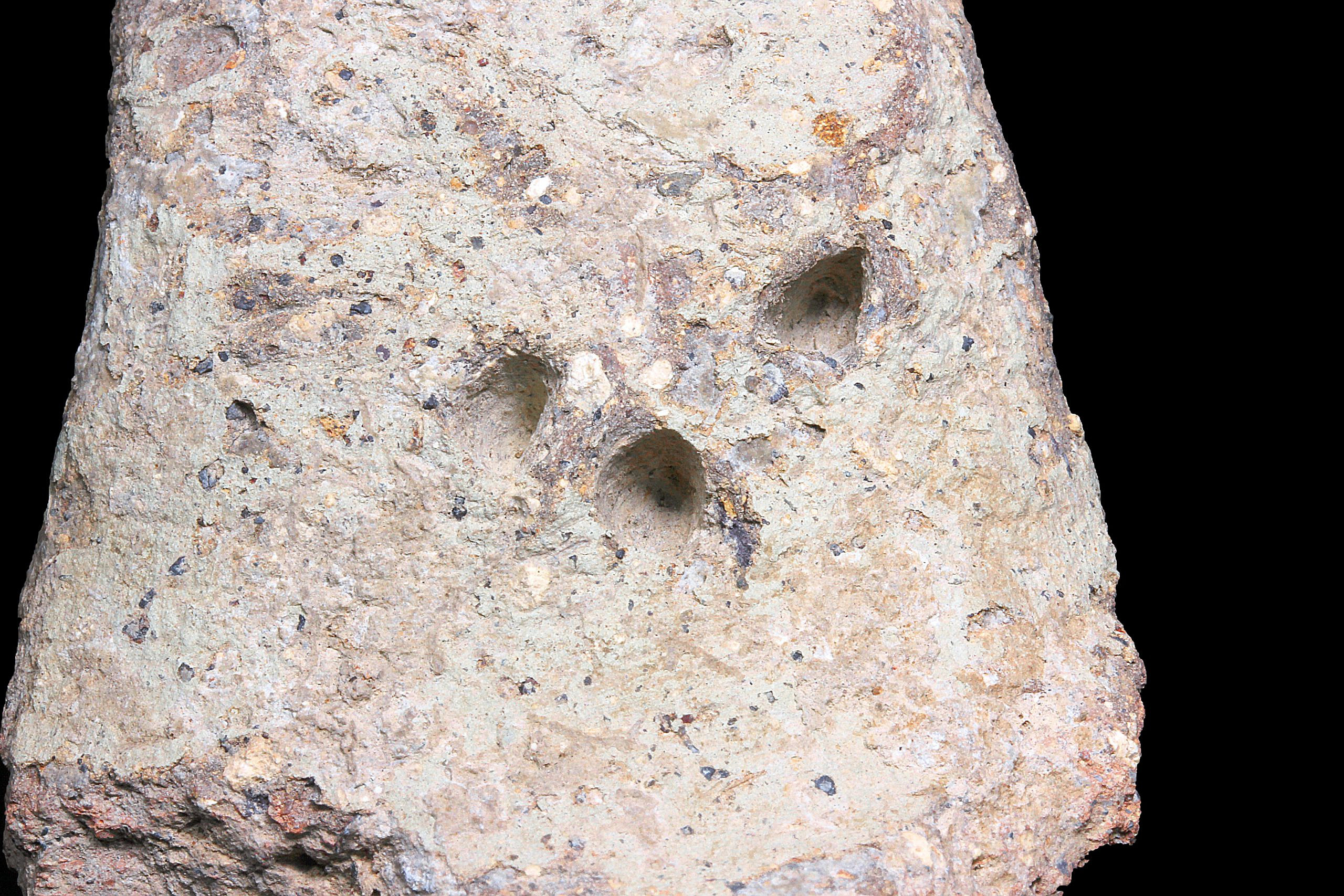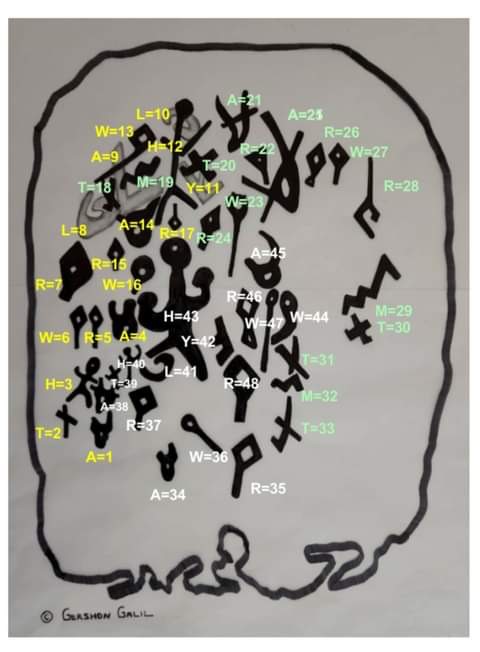
JERUSALEM (JNS) – A lead tablet found at a site where millions of Jews and Christians believe the Israelite leader Joshua built an altar contains the oldest Hebrew text ever found in the Land of Israel as well as the name of God, an academic article published Friday concludes.
The peer review of the small 3,200-year-old curse tablet discovered at Mount Ebal in Samaria more than two years ago is expected to reignite the debate in the archaeological community over the find. It could prove the Israelites were literate at the time as well as shed light on the date of the Exodus from Egypt.
“The big point here is that we have evidence of Hebrew writing in Israel earlier than has previously been established, as well as mention of two of names of the Hebrew God, all from the site where the Bible said Joshua built an altar,” Scott Stripling, the provost at the Bible Seminary in Katy, Texas, who uncovered the tablet, said in a telephone interview with JNS.

The folded, 2-cm. square lead tablet was found in December 2019, during an examination of discarded materials from an excavation at the site that had been led by University of Haifa Professor Adam Zertal (1936-2015) more than three decades earlier.
The site is known from the Book of Deuteronomy as a place of curses.
The tablet emerged from a dump pile left behind from the original dig—common after excavations—in a process known as “wet sifting” whereby ancient stones covered in dirt are washed. The method, which was first used in Jerusalem for finds removed from the Temple Mount, is not considered as scientific as an actual dig, although in this case the item was found in situ.

Wet sifting
Stripling, who had previously participated in the Temple Mount Sifting Project in Jerusalem, said in the interview that when he began the sifting project at Mount Ebal, he only expected to write a “boring methodical paper” about embracing the new technology offered by wet sifting the rubble of excavations.
“The tablet would not have been found without wet sifting,” he said. “At first it looked like a piece of stone covered in dirt. Only when we washed it, it popped out.”
The tablet, which the researchers date to 1400-1200 BCE, could not be opened without damaging it, so a team of experts performed X-ray tomography scanning in Prague as well as detailed photography, revealing an ancient curse written in a proto-alphabetic script, the article, titled “You are Cursed by the God YHW: An Early Hebrew Inscription from Mt. Ebal,” states.
The article includes images and scans of the inscriptions for other academics to weigh in on.
The inscription contains as many as 48 letters and the curse appears on the inside and outside of the tablet.
“You are cursed by the god, yhw, cursed. You will die cursed- cursed you will surely die. Cursed you are by yhw-cursed,” a translation of the inner inscription reads, according to the article.
“What we thought over a year ago, we now have substantiated through our research,” said Stripling.
The earliest Hebrew writing previously found—the Khirbet Qeiyafa ostracon found in the dig at the ancient fortress city near the central Israeli city of Beit Shemesh—was dated from 1000 BCE, making the inscription on this tablet 200 to 400 years older, Stripling said. Its use of the Hebrew word for God also predates the oldest previously found in Israel by 500 to 600 years, he added.
Scholars date the Exodus from Egypt to the 13th or 12th century BCE, Stripling said, although their dating on this tablet could suggest it was earlier.
“We have a Hebrew inscription of a curse found on the mountain of curses,” said Peter van der Veen, associate professor at Johannes Gutenberg University Mainz in Germany and an epigrapher who reviewed the inscription for the study. “I think the conclusion we reached last year is now confirmed by more in-depth study,” he said.
A second peer review of the outer inscription is expected to come out next year, followed by an international conference on the find.
Source: VosIzNeias